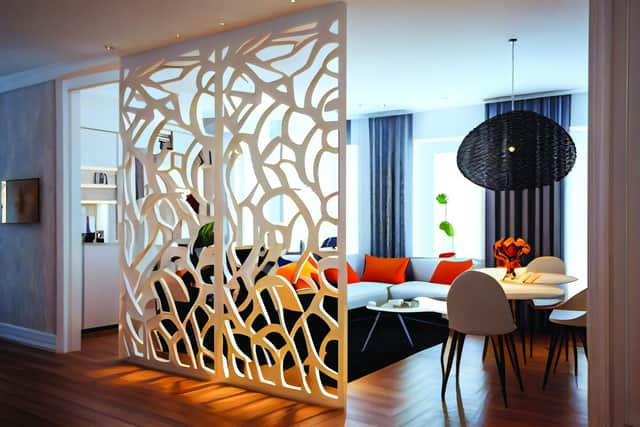Kirsty McLuckie: Semi-divide and conquer
Over the decades, we’ve done away with the traditional suite of smaller rooms – the dining rooms, sitting rooms and kitchens designated for just one activity – and replaced them with one big living space, with a flow-through both of light and of purpose, from cooking to eating, working, relaxing and watching TV.
Most modern homes are built with open-plan designs and older homes have been relentlessly knocked-through, as we’ve collectively taken a sledgehammer to dividing walls.
Advertisement
Hide AdAdvertisement
Hide AdFor some, such open layouts are the epitome of style and practicality, allowing parents to prepare supper while supervising the kids’ homework, or the hosts to be part of the conversation when friends are over, rather than being stuck in the kitchen alone.


But, now the trend appears to be reversing – at least partially.
You can understand the reasoning for wanting to close things down. During lockdowns, days spent sharing the same space could quickly become very trying.
Add in the huge rise of numbers working from home we’ve seen of late, and you understand why those with open-plan living spaces are installing garden offices and converting bedrooms to designated studies in the search to find a room of one’s own.
This is where broken-plan living has emerged as a compromise, in a semi-divide and conquer move.
Rather than erecting full-height walls, broken-plan is the clever use of space in which the open floor is zoned into areas by the use of various finishes, split levels and semi-permanent partitions, such as a display unit, screen or bookcase.
Those keen to get the look are dividing up their spaces with half walls, sliding glass doors or see-through shelving housing vertical plant displays.
Pocket doors, which disappear into a wall, are used to break up larger open areas.
Advertisement
Hide AdAdvertisement
Hide AdA series of zoned areas are easier to decorate in a cosy way too, instead of having to source outsized furniture to fill an aircraft hanger-sized room.
But like all fashions, we’ve been here before.
Before cooking and eating in the same space became de rigeur, a serving hatch from the kitchen was the epitome of broken plan –allowing the 1970’s cook to pass through plates of duck a l’orange and black forest gateau to diners.
But a hatch also allowed mischief. A memorable night was spent at a friend’s house years ago with another guest who was a folk musician.
He insisted on performing his mournful self-penned ditties, but as he did he was unaware of our well-refreshed hostess in the kitchen entertaining us via the hatch behind him, with a series of grotesque faces, Egyptian walks and the old going-down-steps mime.
The poor folkie is probably still smarting from the barely suppressed guffaws that greeted his performance.
However trendy, a Crittall screen just doesn’t offer the same possibilities for hilarity.
- Kirsty McLuckie is property editor at The Scotsman